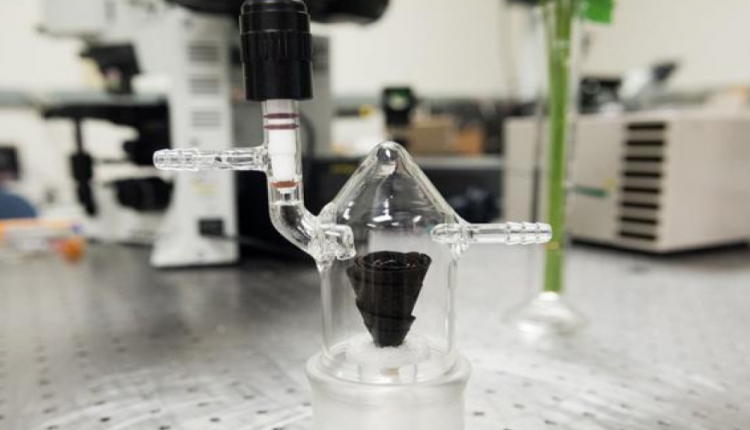
Solar steaming for water production uses energy from sunlight to separate salt and other impurities from water through evaporation. Current solar-steaming technologies are usually expensive, bulky, and produce limited results.
A team led by associate professor Donglei (Emma) Fan in the Cockrell School of Engineering’s Walker Department of Mechanical Engineering has developed a new approach to solar steaming for water production. In a paper published in the most recent issue of the journal Advanced Materials, the authors outline how an origami rose provided the inspiration for developing a new kind of solar-steaming system made from layered, black paper sheets shaped into petals. Attached to a stem-like tube that collects untreated water from any water source, the 3D rose shape makes it easier for the structure to collect and retain more liquid.
“We were searching for more efficient ways to apply the solar-steaming technique for water production by using black filtered paper coated with a special type of polymer, known as polypyrrole,” Fan said.
Polypyrrole is a material known for its photothermal properties, meaning it’s particularly good at converting solar light into thermal heat.
Fan and her team experimented with a number of different ways to shape the paper to see what was best for achieving optimal water retention levels. They began by placing single, round layers of the coated paper flat on the ground under direct sunlight. The single sheets showed promise as water collectors but not in sufficient amounts. After toying with a few other shapes, Fan was inspired by a book she read in high school. Although not about roses per se, The Black Tulip by Alexandre Dumas gave her the idea to try using a flower-like shape, and she discovered the rose to be ideal. Its structure allowed more direct sunlight to hit the photothermic material—with more internal reflections—than other floral shapes and also provided an enlarged surface area for water vapor to dissipate from the material.
The device collects water through its stem-like tube, feeding it to the flower-shaped structure on top. It can also collect raindrops. Water finds its way to the petals where the polypyrrole material coating the flower turns the water into steam. Impurities naturally separate from water when condensed in this way.
The device removes any contamination from heavy metals and bacteria, and it removes salt from seawater, producing clean water that meets drinking standard requirements set by the World Health Organization.
Source: University of Texas at Austin
